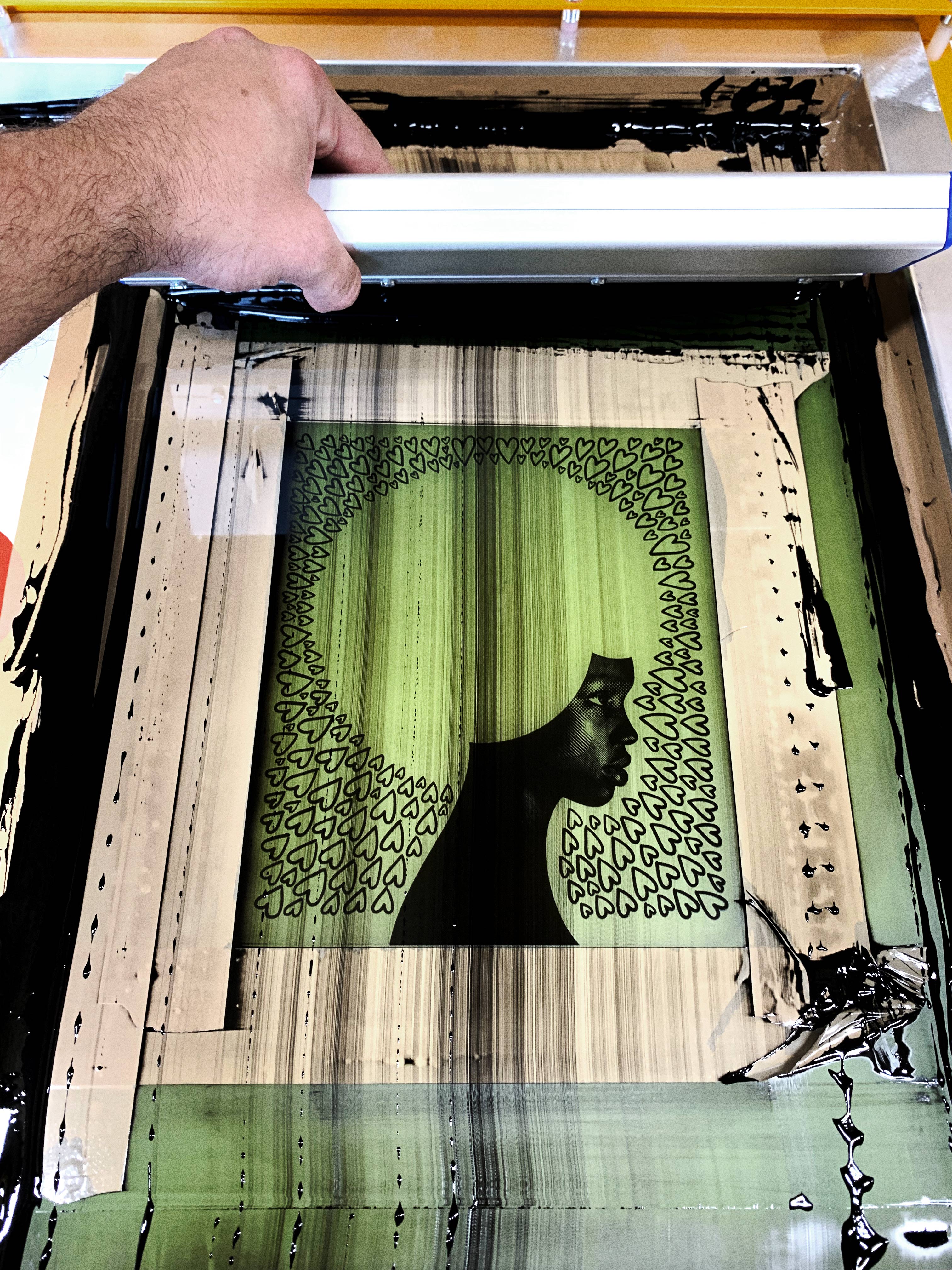The Crucial Overview to Understanding Screen Printing and Its Versatile Uses
Screen printing has an abundant background that dates back to old times, developing right into a sophisticated strategy made use of across different industries today. This guide explores the ins and outs of the screen printing procedure, outlining its applications in fashion, home, and advertising and marketing design - 10:9 Design Screen Printing. Comprehending these basics can open innovative possibility for both commercial and creative tasks. The following areas will certainly expose crucial tips and methods to boost one's screen printing endeavors
The History of Screen Printing
Screen printing has roots that map back centuries, its advancement mirrors the imaginative and technical advancements of different societies. Coming from ancient China, the method was at first utilized for embellishing fabrics and later spread to Japan, where it became integral to Ukiyo-e woodblock printing. The technique shifted to Europe in the 18th century, where it gained appeal among artisans and commercial printers. The creation of picture emulsion in the 20th century changed screen printing, enabling for more elaborate layouts and better performance. Musicians like Andy Warhol even more propelled its appeal, utilizing the medium to create renowned works that combined commercialism and art. By the late 20th century, screen printing had developed itself as a functional method, utilized in style, marketing, and great art. Today, it remains to evolve, integrating electronic modern technology and expanding its applications throughout various markets.
The Screen Printing Refine Explained
Screen printing transforms imaginative visions right into substantial designs with a collection of specific steps. Initially, a photo is developed and afterwards moved onto a screen, generally constructed from great mesh fabric extended over a framework. A light-sensitive emulsion is related to the screen, which is revealed to light, setting in areas not covered by the image. After rinsing the unhardened solution, a pattern is developed.
Next off, the screen is put over the substrate, whether it be material, paper, or another product. Ink is after that pushed with the open areas of the pattern using a squeegee, transferring the layout onto the substrate listed below. This process can be repeated for several colors, calling for separate screens for each and every shade. Ultimately, the printed product is cured making use of warmth to ensure the ink sticks correctly, leading to a resilient, vibrant design prepared for use.
Sorts Of Screen Printing Techniques

Additionally, specialized strategies, such as discharge screen printing, get rid of dye from the textile to develop softer prints, while aluminum foil screen printing uses metallic foil to achieve a glossy coating (10:9 Design Abilene). Each strategy provides unique attributes, accommodating numerous innovative demands and production scales, inevitably increasing the opportunities within the screen printing domain name
Applications of Screen Printing in Various Industries

Additionally, the signs and advertising and marketing fields make use of screen printing for producing eye-catching display screens and banners. This approach permits for strong colors and complex designs that catch attention. In electronics, screen printing is used for using conductive inks to circuit boards, important for component links. Furthermore, the home decoration industry embraces screen printing to produce distinct designs on textiles and wall art. Overall, screen printing acts as an important device across varied areas, enhancing items with personalized and visually enticing graphics.
Tips for Successful Screen Printing Projects
While embarking on a screen printing task, careful interest to detail can considerably enhance the last outcome. Selecting high-grade materials is crucial; this consists of the screen, inks, and substratums. Utilizing appropriate mesh matters can influence ink deposition and detail resolution. Preparation is equally important; thorough cleaning of screens and appropriate direct exposure times guarantee crisp prints.
Next off, exact registration is essential for multi-color prints. Using positioning tools can aid accomplish precise layering. In addition, screening prints on scrap products before production helps recognize potential concerns without squandering sources.

Often Asked Inquiries
What Materials Are Ideal for Screen Printing on Fabric?
Cotton and polyester blends are excellent for screen printing on fabric due to their longevity and ink absorption. Furthermore, specialty textiles like silk or canvas can create unique textures and finishes, boosting the overall style quality.
Just how Do I Tidy and Maintain Screen Printing Tools?
To maintain and clean screen printing devices, one should more info regularly wash screens with ideal solvents, inspect mops for wear, lubricate relocating parts, and shop all things in a completely dry, dust-free environment to lengthen their lifespan.
What Are the Ecological Influences of Screen Printing?
Screen printing can have considerable environmental effects, including chemical waste from inks and solvents, water use throughout cleaning processes, and power usage. Eco-friendly materials and sustainable methods are vital for minimizing these negative impacts.
Can Screen Printing Be Done in your home Effectively?
Screen printing can be properly done at home with the right materials and methods. Enthusiasts can create high quality prints, though success relies on their skill degree, equipment, and understanding of the process involved.
What Are the Prices Connected With Beginning a Display Printing Service?

Beginning a screen printing business involves prices for devices, products, and workspace. Initial expenditures generally range from a couple of hundred to several thousand bucks, depending upon the range, top quality of equipment, and desired manufacturing capability.
Screen printing has a rich background that dates back to ancient times, progressing right into an innovative strategy utilized across different markets today. One more method, rotary screen printing, utilizes round screens, helping with constant printing on fabric rolls, therefore enhancing efficiency for massive manufacturings. Furthermore, specialty techniques, such as discharge screen printing, eliminate dye from the textile to create softer prints, while aluminum foil screen printing applies metal aluminum foil to accomplish a glossy surface. In the fashion field, screen printing is commonly utilized to produce vibrant designs on clothing, making it possible for brand names to showcase their unique styles. Cotton and polyester blends are optimal for screen printing on material due to their resilience and ink absorption.